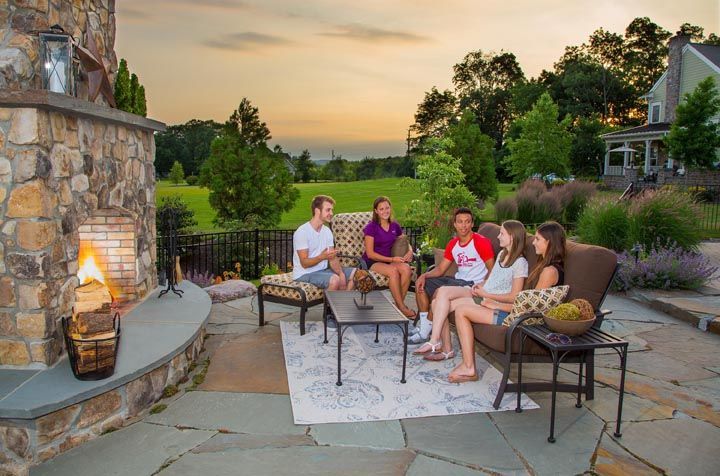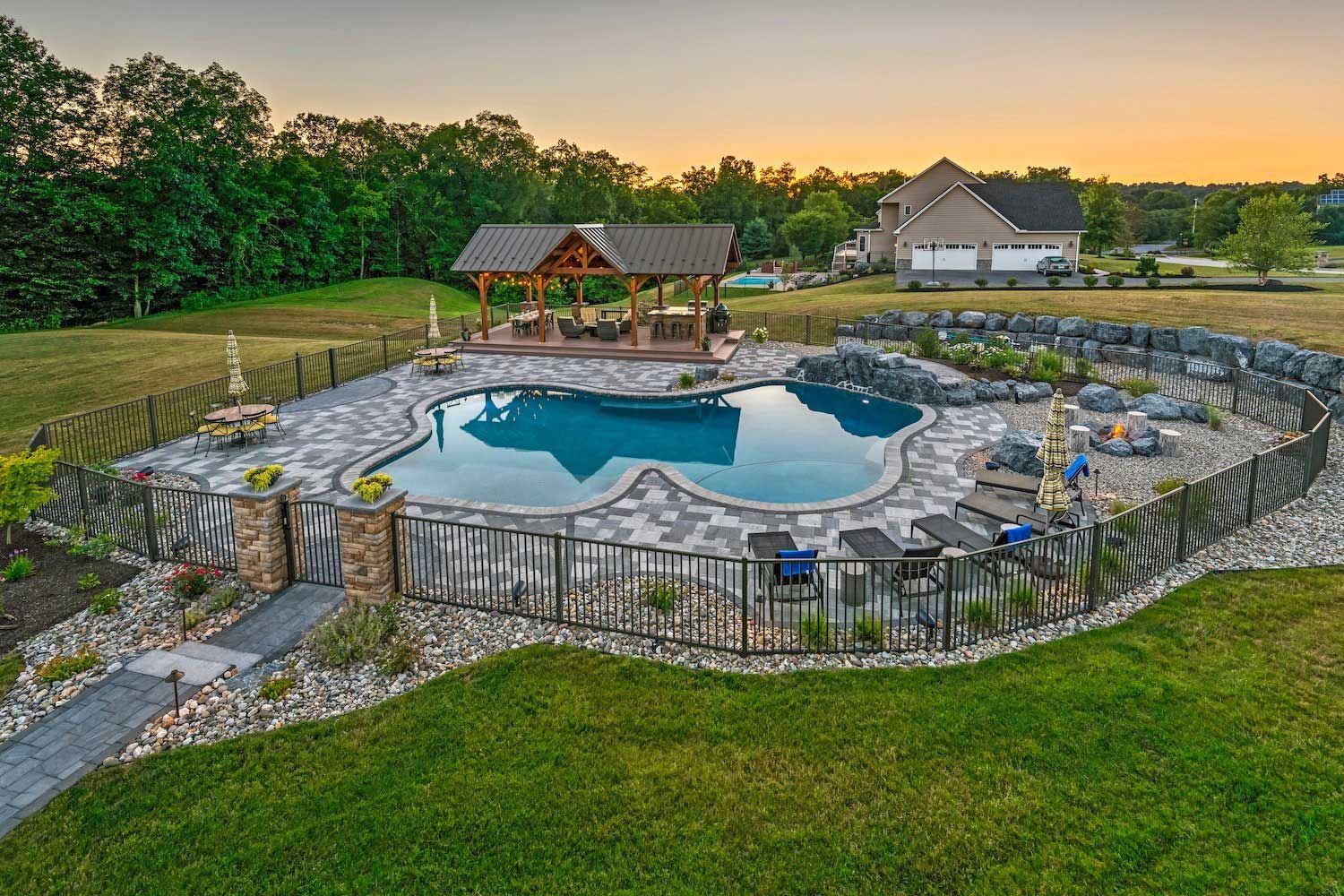Crucial Details When Designing and Building a Fire Pit
Imagine gathering around your beautiful fire pit with friends and family, enjoying the warmth and the glow. A fire pit is a wonderful addition to an overall outdoor living space design.
With the addition of this fire feature, your outdoor living area has come together just as you’d imagined it—that is until the wind from your fire pit is blowing smoke directly into everyone’s faces all evening long. Because orientation wasn’t given any thought with your fire pit design, each time you use it, you have to move away from the fire pit every time the wind picks up.
Or, even worse, maybe a novice installer used a material that is not even rated for such high heat. You may not know this, but concrete blocks can actually explode if they get too hot, making your fire pit a serious danger.

It’s quite possible that building a fire pit may be a lot more complicated than you thought. It’s not just a matter of digging out an area and adding some stone and some surrounding blocks. There are important design choices that must be taken into account so that the area becomes a highlight of your backyard, not detract from it.
That’s why we’ve put together this helpful guide. Here are some of those crucial details to consider when building a fire pit area as part of your outdoor living space.
Selecting Materials for Fire Pit Construction
One of the biggest mistakes we’ve seen with fire pit construction is when homeowners or even landscape contractors use materials that are not suited for high temperatures. As we mentioned, concrete blocks can actually explode if they aren’t made to heat up.
A lot of times, DIY fire pits are built using stones and boulders found around the yard, without knowing what their heat rating is. If not suited to high temperatures, these stones can crack and splinter.
This is why a fire pit design should include a stainless steel interior liner that is installed with the proper amount of air space between the liner and the fire pit material. This barrier will prevent the fire pit material from getting too hot and causing problems. Whether you choose a natural stone fire pit or even one made with manufactured materials, a liner will add an element of safety and security.
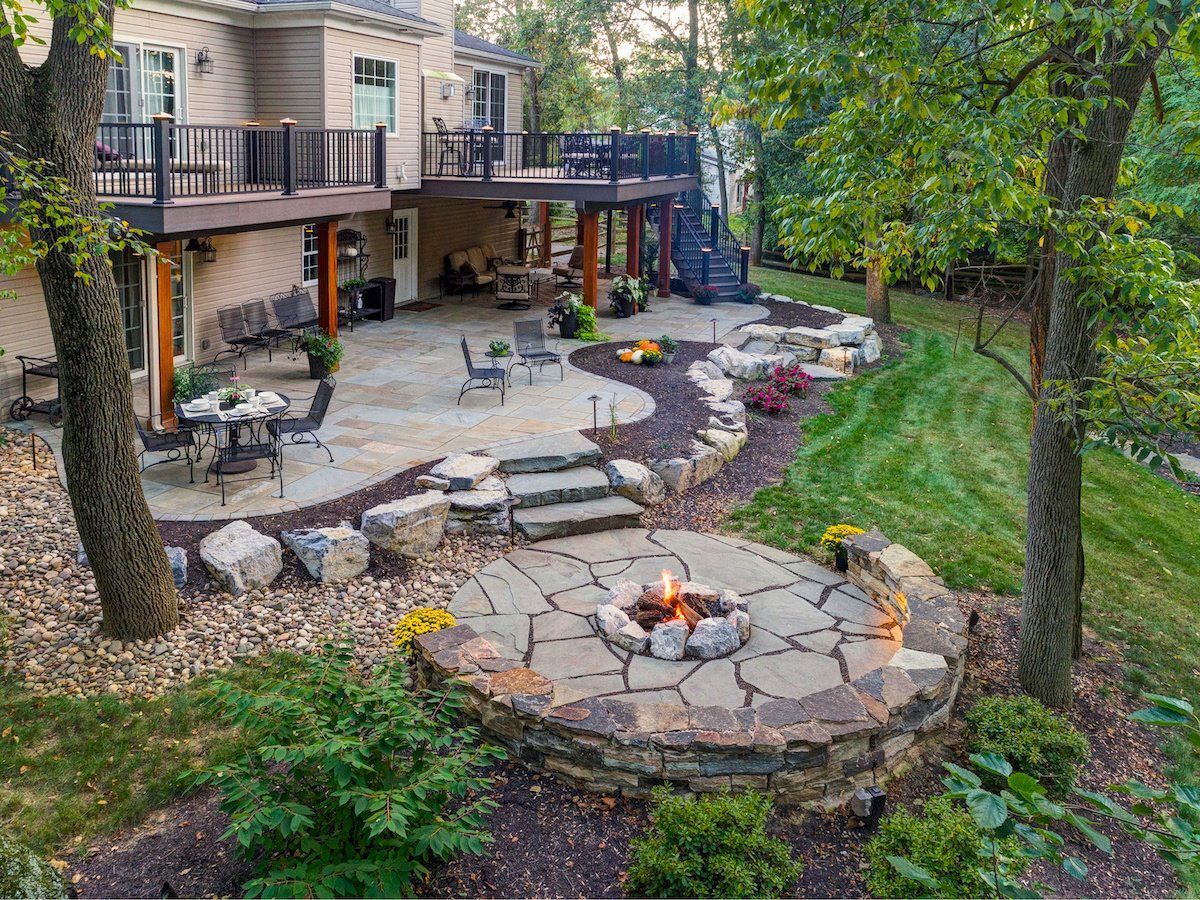
Accounting for Height in Fire Pit Design
The height and the circumference of your fire pit are critical details that should also be given attention. It’s not uncommon for do-it-yourselfers or even landscapers that haven’t built a lot of fire pits to build them too high.
This is typically an effort to make the fire pit safer by preventing logs or embers from rolling out and keeping the fire contained. However, what ends up happening is that the kids need to lean over to roast their marshmallows—in actuality making the higher fire pit less safe.
In general, a good height for the outside edge is between 6 and 12 inches tall. This is enough of a safety buffer to keep logs from rolling out but it’s not too deep that there is a need to “lean in” to get close to the fire.
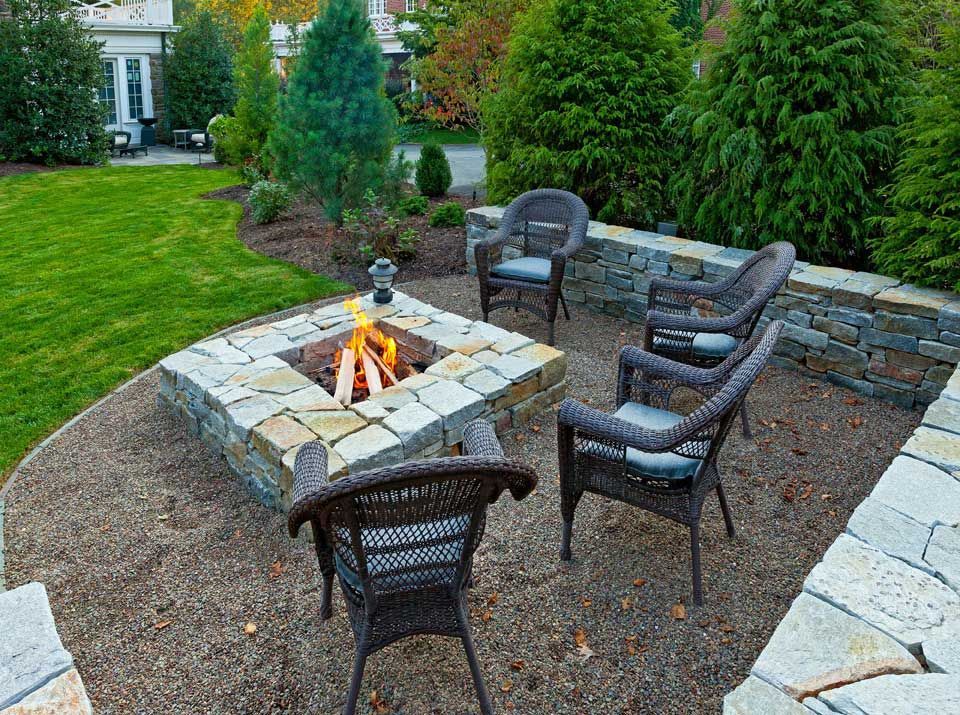
Thinking About the Orientation of Your Fire Pit Design
The exact location on your property where you plan to install your fire pit is also a crucial factor. That’s because, in the wrong spot, wind can have the power to ruin your entire outdoor experience not only for the immediate area around your fire pit, but possibly on the entire patio.
One of the first questions a landscape designer should investigate is which way the wind blows on your property. If you design a patio with a fire pit, you want to be sure the smoke isn’t directly blowing into peoples’ faces who are around the fire—but you also want to pay attention to other nearby seating areas and how the fire will affect them. If you do have a windy property, a thoughtful designer will choose a different location for your fire pit as well as possibly plant windscreens to mitigate some of the impact.
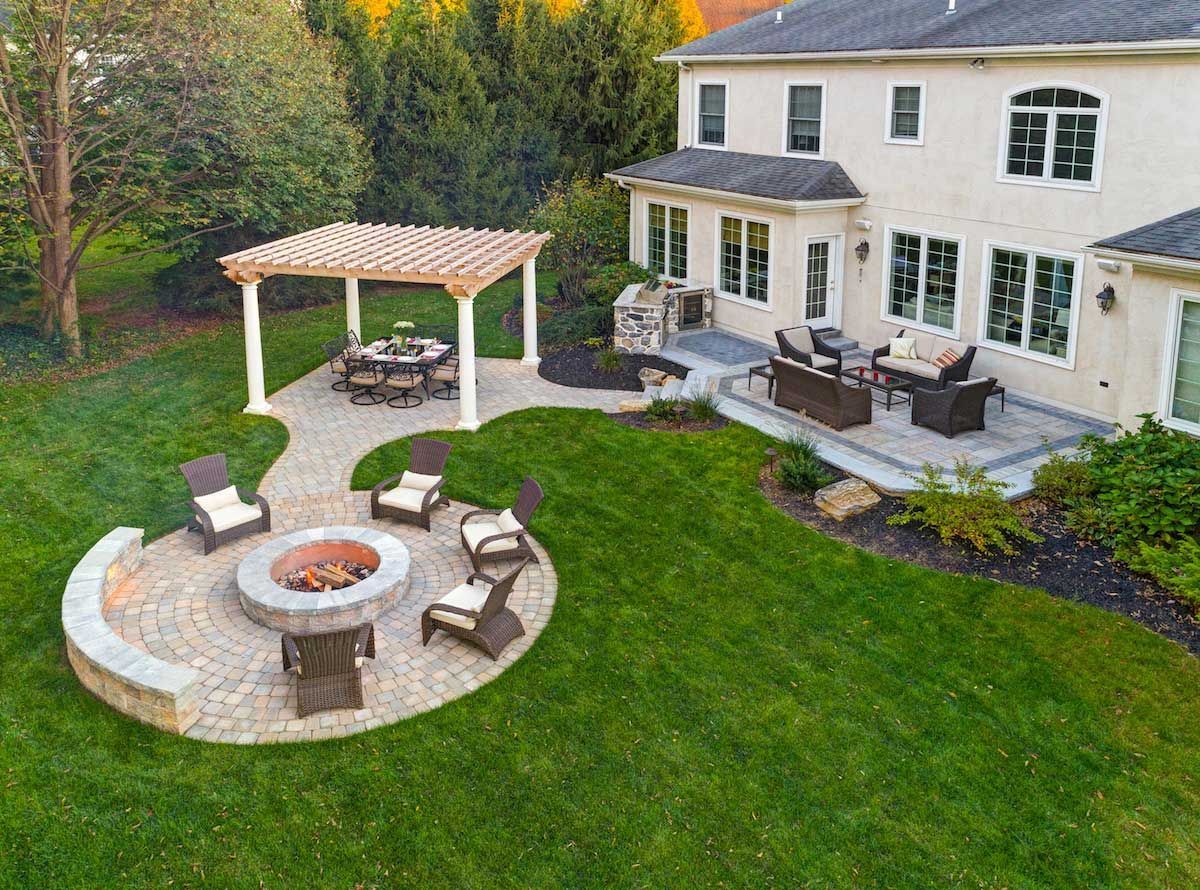
Besides the wind/smoke factor, orientation is also important in terms of views. Thought should be given to where the fire pit can be seen from. If you have a pool, dining area, or even another seating area, your experience there is made even more enjoyable when you’re able to enjoy the view of the fire pit from as many places as possible.
Understanding Safety and Local Codes
Patios with fire pits must also be built with safety in mind. We already mentioned materials and how certain ones are not rated for heat. But there’s more to it than that. For instance, by code, a fire pit must also be at least 10 feet from any combustible material, such as your house. In fact, in some municipalities, laws may be even more extreme.
In addition, a fire pit should not be built near low-hanging branches or built underneath a covering such as a pergola or pavilion. Likewise, it should always be built on a non-flammable surface, like a patio. Fire pits and decks just don’t mix.
While some of this may seem like common sense, it’s one of those projects where there is no room for error. Hastily building a fire pit without giving it a lot of forethought and planning can mean ending up with something that is dangerous to operate.
Being able to see your fire pit from a window of the house is also a safety feature that a lot of people don’t think of. If you forget whether you put the flame completely out, you’ll be able to peek on it from the window to be certain at any time of day or night.
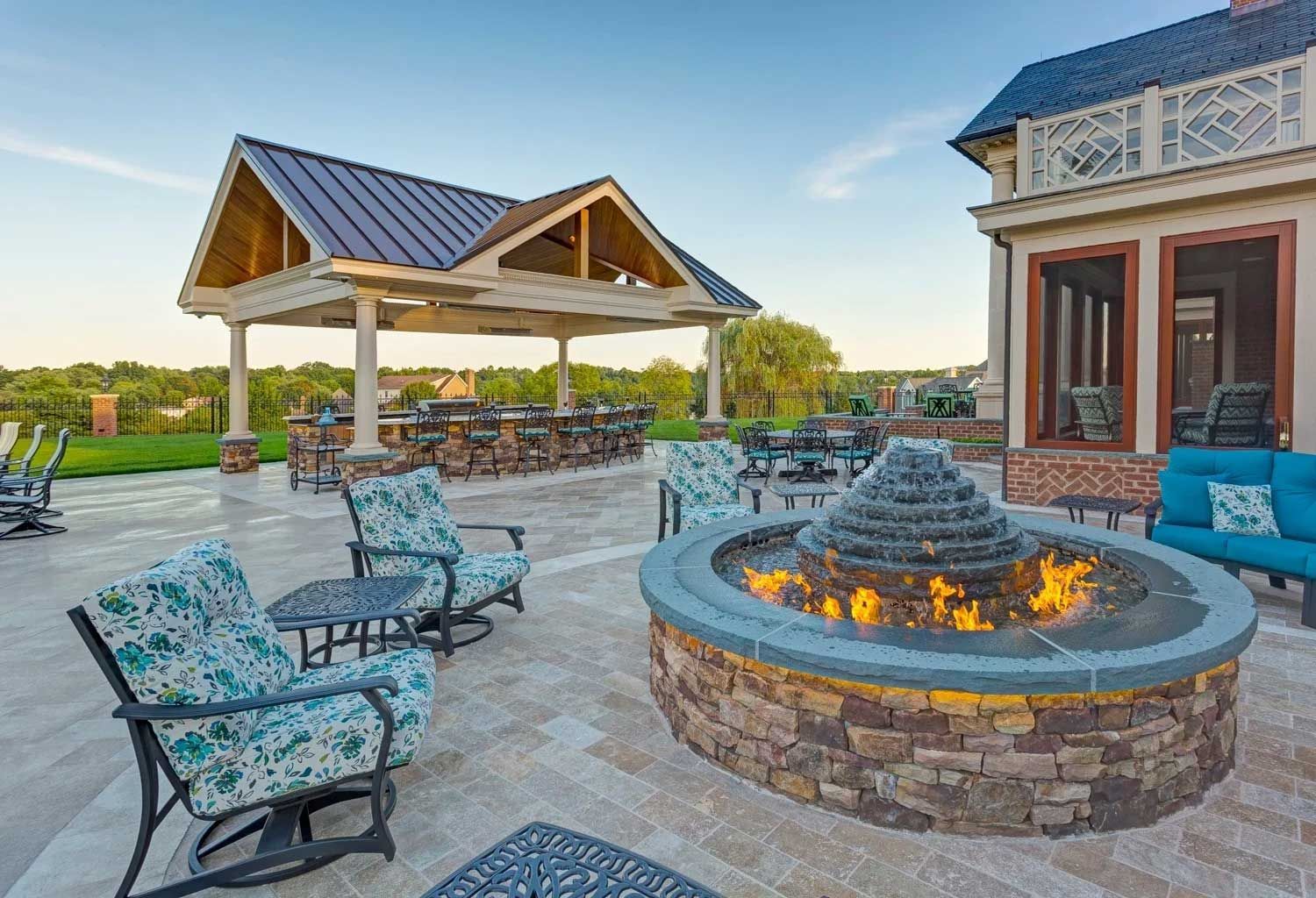
Depending on your situation, and whether you feel like you constantly have to check on a wood-burning fire, natural gas might be a better option. While some homeowners love the smell and the sound of a wood-burning fire, others might feel concerned about building and maintaining a fire with wood. In these cases, a gas-powered fire pit might be the way to go. It can be turned on or off at the push of a button and will not smolder. Once it’s off, you can walk away confidently knowing there’s no lingering flame.
Fire Pit Alternatives
It’s important to mention that a fire pit is not for everyone. For instance, if you have a property that is perpetually windy and you don’t want to deal with trying to make a fire pit work, you might opt for something different. There are other options that can allow you to still have a fire feature on your property such as a gas-powered fire bowl or table.
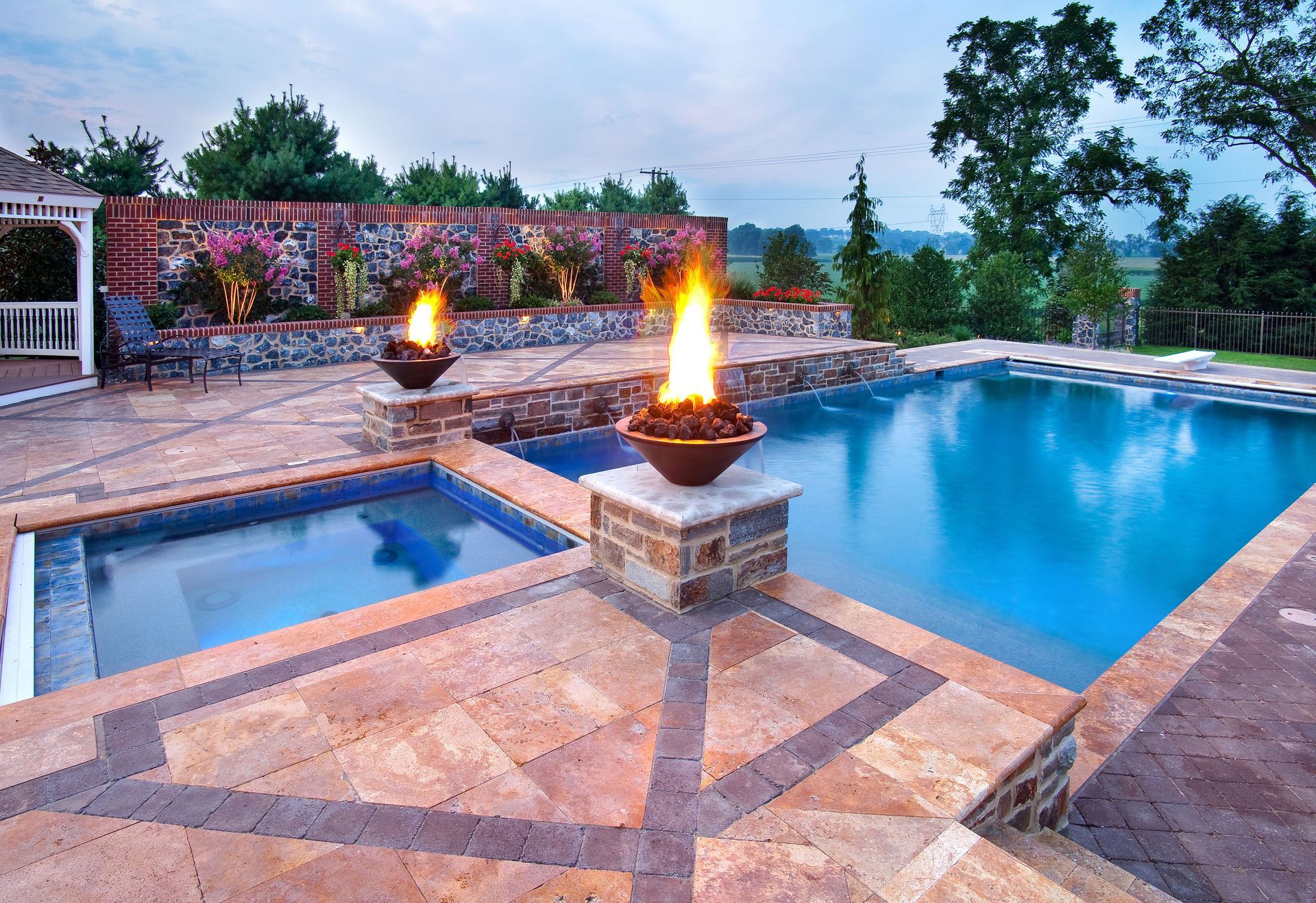
You might also consider an outdoor fireplace over a fire pit. A fireplace takes up less patio space and has a chimney that can direct the smoke upward. But it still gives you the beautiful look and warmth of a fire.
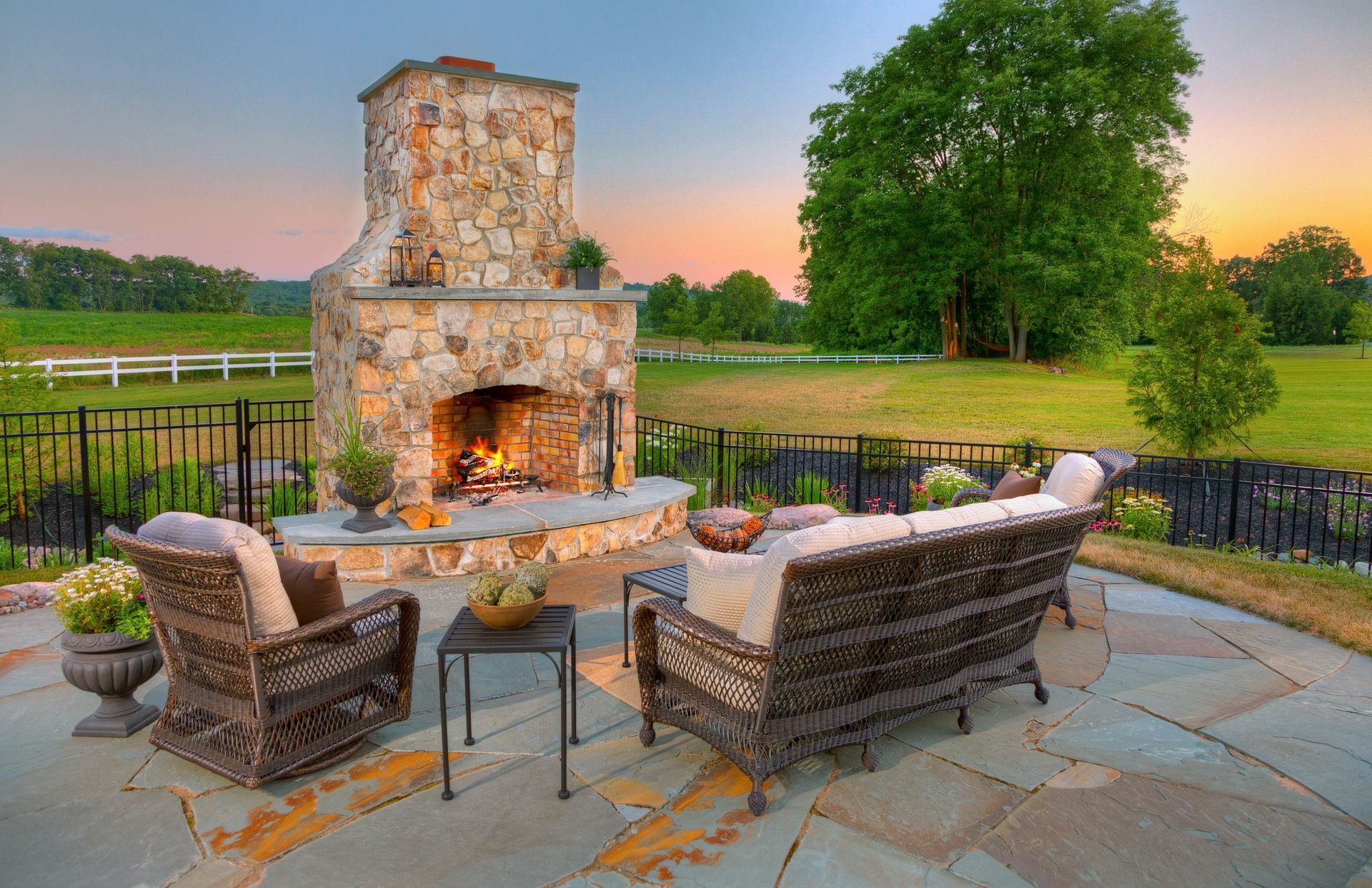
Choosing Wisely for Fire Pit Success
Adding a fire pit into your backyard transformation project is commonly underestimated in not only its complexity, but overall impact. However, when thoughtfully planned, this could be the winning move to create the perfect backyard retreat.
In the end, it is the design that has a tremendous impact on the safety and the aesthetics of the fire pit in your outdoor living area. Just like any other area of the project, good design and proper construction are key.
And this is an area where you have a choice.
You could try to slap something together yourself or even hire a pro that occasionally builds fire pits. But by choosing this route, you may be taking a gamble when it comes to overall aesthetics, enjoyment, and even safety.
Or, you can choose a landscape company with a Registered Landscape Architect. Here at Earth, Turf, & Wood, we’ve helped many local homeowners take all of these facts into account and design a fire pit that was not only a beautiful addition to their property but also provided them a safe and enjoyable experience as well.
We’d love to do the same for you. By choosing this latter path, you’ll be able to have peace of mind that your fire pit can be experienced without any doubts or concerns. It will look and perform exactly as it's meant to—leaving you with nothing to do but sit back, relax, and enjoy it.
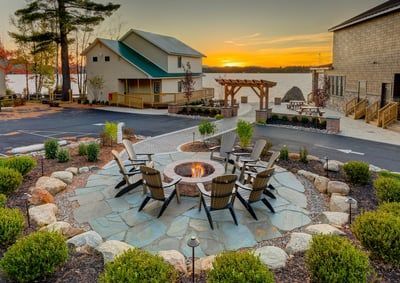
If you’d like to discuss adding an outdoor living area with a fire pit, or other alternatives, to your Harrisburg, Lancaster, York, Hershey, or Reading, PA home, then contact us for a free consultation and get ready to see your project come to life.

Written by
Mary Dresser, RLA ALSA
Mary Hatch Dresser is a Registered Landscape Architect with a Bachelor’s degree in Landscape Architecture from the University of Georgia School of Environmental Design. Mary has designed landscapes for 32 years and joined ETW exclusively in 2009. Mary is a member of the American Society of Landscape Architects (ASLA); and also serves on the Shade Tree Committee in Strasburg Borough where she resides. Mary prides herself in carefully listening to her clients to professionally meld their ideas and personal criteria with sound, experienced design practice.



